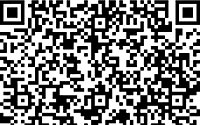 I am not sure how many times the basics of QR code use need to be covered, but apparently it is more than we already do it. The ubiquity of these little
things is starting to feel like a street art project. So many of them are plastered without comment or description everywhere, I am starting to feel as if graffiti pranksters are engaged in a
guerrilla art project that comments on the digitization of our environment.
I am not sure how many times the basics of QR code use need to be covered, but apparently it is more than we already do it. The ubiquity of these little
things is starting to feel like a street art project. So many of them are plastered without comment or description everywhere, I am starting to feel as if graffiti pranksters are engaged in a
guerrilla art project that comments on the digitization of our environment.
So it is good to see even some of the most familiar legacy business enablement companies like Pitney Bowes (yup, the
postage meter people) get into the act of making the QR environment just a bit more healthy for us all. The company posted a short and sensible guide to “Success When Planning Your QR Code
Mobile Campaign” that is refreshing in its succinct reiteration of the basics. There are four keys to making QR programs work: create, optimize, delight and educate.
advertisement
advertisement
Make the offer clear
and “irresistible,” they advise. There should be no doubt what the user is getting, and they are getting something of real interest. It doesn’t have to be a discount. It can be a
“sneak peak” at a product or video, an interview -- something special. “More” means nothing.
Yes, you need to optimize your landing pages to be mobile-friendly (oh, you
would be surprised how this one gets missed). But they also remind you to keep the experience consistent with the call to action -- simple and not overwhelming -- and a route for capturing email.
I am heartened that a postage machine company as old as, well, postage machines also gets the most important and oft-forgotten piece of a mobile code program -- “delight.” Get beyond
the mushy-headed “added value” and think “experience.” Are you making this QR capture worth the trip? Okay maybe a discount is a worthwhile end point in some contexts, but
making the process a fun and entertaining use of their device is just as important.
Finally, set yourself up to learn. Construct projects with back-end analytics or perhaps multiple offers
that let you better see how people want to interact with your brand via a QR code.
Pitney Bowes, of course, is not just a postage meter company. They are offering a suite of software and
SMB-aimed tools that include “pbSmart” QR codes. But their simple advice is worth remembering for campaigns large and small. If SMBs really get into the mobile code act, then the
environment will become even more cluttered with the fugly icons and relentless calls to action.
One of my personal mantras from the beginning of our MediaPost coverage of mobile media has
been that mobile technology makes the physical world clickable. Techniques like QR codes and other geolocation and real-world triggers can make the world into the Web, where any moment is essentially
clickable.
Of course, the prospect of that real world stuffed with 2D calls to action is not quite what I had in mind. Turning the world into the World Wide Web doesn’t mean the world
has to look like the Internet.